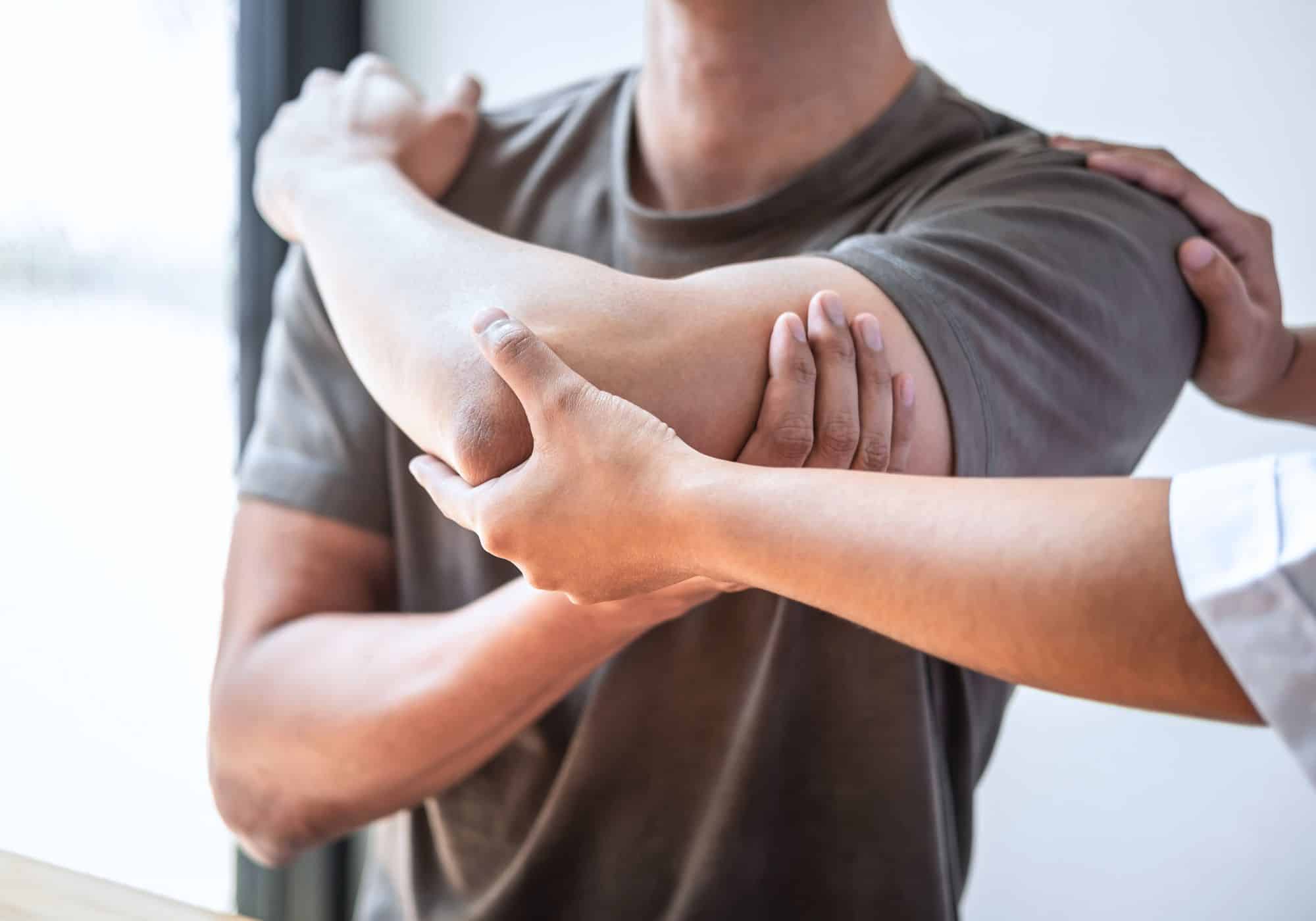Resources > Is Spasticity Just Muscle Tightness? Understanding the Difference Between Spasticity, Stiffness, and Weakness
Is Spasticity Just Muscle Tightness? Understanding the Difference Between Spasticity, Stiffness, and Weakness
- Layer 3 (Top): Overactive Nerve Signals and Abnormal Movement Patterns
- Analogy
- Why It Matters
- Layer 2 (Middle): Muscle shortening and Structural stiffness
- Analogy
- Why It Matters
- Layer 1 (Bottom): Weakness and Loss of Voluntary Control
- Analogy
- Why It Matters
- How the Layers Interact
- Why This Matters for Your Treatment
- The Takeaway

At Spasticity and Movement Partners, we take time to understand what is truly causing your symptoms. That is because what feels like “tightness” on the outside can stem from very different issues underneath. To guide treatment, we use a three-layer model that helps us identify the root causes of your movement challenges.
Together, these symptoms are sometimes referred to as spastic movement disorders. Breaking them down into layers helps us treat the right problem at the right time
Layer 3 (Top): Overactive Nerve Signals and Abnormal Movement Patterns
When the nervous system is damaged, reflexes can become overly sensitive and muscle control can become disorganized. These neural changes can result in:
- Spasticity, where muscles resist fast movements and stretching
- Abnormal movement patterns, where muscles activate even when you are not trying to use them
Analogy
Imagine your muscles are metal springs connected by electrical wires. Some wires are pulling too hard (spasticity), while others are firing when they should not (abnormal patterns).
Why It Matters
These symptoms often respond well to treatments like botulinum toxin injections, nerve blocks, and targeted therapy to retrain movement patterns. This top layer of symptoms is the most treatable in our clinic.
Layer 2 (Middle): Muscle shortening and Structural stiffness
When muscles do not move regularly, they begin to shrink and stiffen. Over time, this also affects flexibility in the joints. This type of non-neural, mechanical stiffness is different from nerve-driven spasticity.
Even though this layer involves feeling stiff, it’s important to know that the abnormal movement patterns (Layer 3) can also make a limb feel tight.
Analogy
Imagine those same metal springs begin to rust from disuse. Surface rust can be cleaned off but deep rust permanently changes the structure.
Why It Matters
Stiffness from contractures may require stretching, splinting, or surgery. Once a contracture forms, it usually can’t be reversed without surgical intervention. While we don’t directly reverse contractures with injections, managing nerve overactivity (Layer 3) can help slow or prevent these structural changes. We also collaborate with therapists to address this stiffness through stretching, splinting, and movement planning.
Layer 1 (Bottom): Weakness and Loss of Voluntary Control
After a brain or spinal cord injury, the brain may have trouble sending signals to the muscles. This leads to more than just weakness: it’s a reduced ability to move muscles on purpose, known as a loss of volitional control.
Often, we cannot fully understand how much muscle control is left until we address the stiffness (layer 2) and nerve overactivity (layer 3) that may be masking it.
Analogy
Imagine that the metal springs can’t move on command because the brain can’t activate them. This is made more difficult when there is rust (layer 2), the wires are pulling too hard (layer 3), or wires are firing when they’re not supposed to be (layer 3).
Why It Matters
When muscles aren’t used properly, they begin to stiffen over time (Layer 2). That’s why neuroplasticity-based therapy—which focuses on retraining the brain to send better signals—is essential for active function and movement.
How the Layers Interact
These layers are not separate. They affect each other over time.
- Layers 2 and 3 can both mask and worsen true weakness (layer 1). A mechanically shortened joint or hyperactive reflex can prevent a muscle from moving even if the brain can still activate it partially. That’s why we often assess and treat the upper layers first.
- Layer 1 (weakness) often leads to layer 2 (stiffness), and indirectly contributes to layer 3 (spasticity and abnormal movement patterns).
- Layers 2 and 3 reinforce each other over time. Structural stiffness increases reflex sensitivity, and reflexes increase stiffness.
At Spasticity and Movement Partners in New Jersey, we assess and treat each layer in order, so we can target what is actually causing the problem, not just what it feels like on the surface.
Why This Matters for Your Treatment
Understanding what’s really causing the “tightness” is key to effective treatment:
Symptom Origin | Common Treatments |
|---|---|
Spasticity / Abnormal Reflexes | Medications, botulinum toxin, nerve blocks, neuroplasticity-based therapy |
Structural Stiffness / Contracture | Stretching, splints, bracing, or surgery
|
Weakness | Strength training, neuroplasticity-based therapy |
Sometimes we use diagnostic nerve blocks to figure out whether your symptoms are coming from reflex overactivity or structural stiffness.
The Takeaway
What feels like “tightness” may actually stem from one or more of the following symptoms:
- Weakness, where the brain is not sending the right signal,
- Stiffness, where muscles or joints are physically shortened or abnormal movement patterns don’t allow for muscle relaxation,
- Spasticity, where reflexes are too sensitive and muscles resist movement
That is why we take the time to evaluate each layer carefully so we can build a treatment plan that works for your body, your goals, and your daily life.
